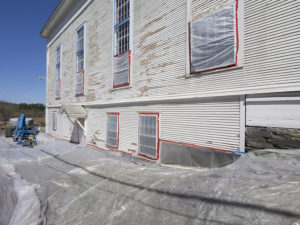Due to its low cost and stability, lead was commonly used in construction and plumbing until the late 19th century.
As a result, this heavy metal is still found in buildings and construction sites, especially in demolition, salvage, renovation, and even cleaning. The dangers of lead exposure and poisoning are well known and it’s important to protect workers from lead exposure in construction.
There are numerous exposure methods for workers.
* Inhalation of lead fumes or dust is common.
* Lead may even be ingested if it’s present on a worker’s hands.
* The exposure may not even stay in the construction site as lead can dust can easily accumulate on skin, clothes, tools, and vehicles.
Although the dangers of lead are based on how much a person is exposed to at one time as well as the total amount of exposure over time, some people are at higher risk for complications than others. Anyone with asthma or respiratory diseases faces an increased risk of complications with exposure to lead
To limit and prevent exposure, OSHA recommends:
* Always use appropriate personal protective equipment (PPE) such as gloves and respirators
* Wash hands and face after work and before ingesting food or liquids
* Never eat in any area where PPE is required
* Clothing or uniforms that have been exposed to lead should never be taken home.
* Wash any exposed clothes or uniforms daily using approved cleaning methods
* Watch for any signs or symptoms of lead exposure which may include abdominal pain, migraines, and loss of sensation
* When working outside, stand away from any dust
* Always use ventilation for enclosed work areas
* Always use lead-free products and chemicals when able
* Use dust-collecting equipment to decrease dust exposure
* Whenever feasible, make use of lead-free products and chemicals.
If you’re concerned about lead exposure risk, use these tips to get started and contact us to get expert advice on minimizing exposure. We specialize in helping companies understand their risk and obtain appropriate coverages to mitigate that risk. If you have any insurance related questions please be sure to reach out
to us.



